
Causes of Brown and Falling Bottom Leaves in Succulents

Succulents are popular plants known for their ability to store water in their leaves, stems, and roots. They come in various shapes and sizes and are often chosen for their low maintenance and unique appearance. However, one common issue that succulent owners may encounter is the browning and falling of bottom leaves. This can be a cause for concern and may indicate underlying problems with the plant's health.
We will explore the different causes of brown and falling bottom leaves in succulents. We will discuss common factors such as overwatering, underwatering, inadequate lighting, and pests that can contribute to this issue. Additionally, we will provide tips and solutions on how to prevent and address these problems to ensure the overall health and vitality of your succulent plants. So, if you're looking to keep your succulents thriving and beautiful, read on to learn more about the causes and solutions for brown and falling bottom leaves.
- Lack of sunlight can cause the bottom leaves of succulents to turn brown and fall
- Overwatering can lead to root rot, which causes the bottom leaves to brown and fall off
- Nutrient deficiency can result in brown and falling bottom leaves in succulents
- Pests and diseases can cause the bottom leaves of succulents to turn brown and drop
- Stress from temperature fluctuations or improper care can cause the bottom leaves to brown and fall off
- Lack of ventilation can result in the bottom leaves of succulents turning brown and falling off
- Frequently Asked Questions
Lack of sunlight can cause the bottom leaves of succulents to turn brown and fall
If you notice that the bottom leaves of your succulents are turning brown and falling off, one possible cause could be a lack of sunlight. Succulents are known for their ability to thrive in bright, direct sunlight, so if they are not receiving enough light, it can have negative effects on the health of the plant.
Succulents have adapted to survive in arid environments, where they are exposed to long hours of intense sunlight. This is why they often have thick, fleshy leaves that help them store water. When succulents are not exposed to enough sunlight, their leaves may not be able to photosynthesize efficiently, leading to a lack of energy production and eventually causing the leaves to die and fall off.
To prevent this issue, it is important to ensure that your succulents are placed in a location where they can receive adequate sunlight. Most succulents require at least 6 hours of direct sunlight per day, although the exact amount may vary depending on the specific species.
When positioning your succulents, consider placing them near a south-facing window or in a spot with plenty of natural light. If you are growing succulents indoors, you may need to supplement their sunlight intake with artificial grow lights. These lights can provide the necessary light spectrum for succulents to thrive and prevent the bottom leaves from browning and falling off.
In addition to providing sufficient sunlight, it is crucial to avoid overwatering your succulents. Overwatering can lead to root rot, which can also cause the bottom leaves to turn brown and fall off. Succulents have adapted to survive in dry conditions, so they are more prone to root rot if they are consistently exposed to excess moisture.
 Using Miracle-Gro on Succulents: Is it Safe or Harmful?
Using Miracle-Gro on Succulents: Is it Safe or Harmful?To ensure proper drainage, use well-draining soil specifically formulated for succulents. This type of soil allows excess water to flow out of the pot, preventing waterlogged roots. Additionally, make sure to water your succulents only when the soil is completely dry. Stick your finger an inch into the soil, and if it feels dry, it's time to water.
By providing adequate sunlight and avoiding overwatering, you can help prevent the bottom leaves of your succulents from turning brown and falling off. Remember to monitor your plants regularly and make adjustments to their care as needed. With proper attention and care, your succulents will continue to thrive and display their vibrant beauty.
Overwatering can lead to root rot, which causes the bottom leaves to brown and fall off
Overwatering is a common mistake that many succulent owners make, and it can have detrimental effects on the health of the plant. One of the most noticeable signs of overwatering is the browning and falling off of the bottom leaves.
When succulents are overwatered, their roots become saturated and start to rot. This rotting process prevents the roots from absorbing nutrients and oxygen properly, leading to a decline in the overall health of the plant.
The lack of oxygen and nutrients in the roots affects the entire plant, including the leaves. As the roots deteriorate, they are unable to provide the necessary resources to sustain the lower leaves. Consequently, these leaves turn brown and eventually detach from the stem.
This phenomenon is often referred to as "bottom leaf drop." It is a natural response of the succulent to the stress caused by overwatering and root rot. Additionally, the browning and falling off of bottom leaves serve as a survival mechanism for the plant. By shedding the damaged leaves, the plant can redirect its energy towards new growth and the remaining healthy foliage.
It is essential to note that not all browning and falling leaves are solely caused by overwatering. Other factors, such as inadequate lighting, poor soil drainage, or temperature fluctuations, can also contribute to this issue. However, overwatering remains one of the primary culprits behind this common problem.
 Can Succulents Survive the Cold Winter Months? Tips for Winter Care
Can Succulents Survive the Cold Winter Months? Tips for Winter CarePreventing overwatering and bottom leaf drop
To prevent overwatering and the subsequent browning and falling off of bottom leaves, it is crucial to establish a proper watering routine for your succulents. Here are a few tips to help you maintain the right balance:
- Water sparingly: Succulents have adapted to survive in arid environments by storing water in their leaves and stems. They do not require frequent watering and can tolerate periods of drought. Allow the soil to dry out completely before watering again.
- Use well-draining soil: Ensure that your succulent is planted in a well-draining soil mixture. This type of soil allows excess water to flow through, preventing waterlogged roots and potential rot.
- Choose appropriate containers: Select pots with drainage holes to allow excess water to escape. Avoid using containers without drainage as they can trap water and lead to overwatering.
- Monitor lighting conditions: Succulents thrive in bright, indirect sunlight. Ensure that your plants are receiving adequate light, as poor lighting can weaken the plant and make it more susceptible to stress.
- Observe temperature fluctuations: Extreme temperature changes can put stress on succulents. Avoid exposing them to sudden temperature shifts and provide appropriate protection during colder months.
By following these guidelines and being mindful of your succulent's needs, you can prevent overwatering and reduce the occurrence of bottom leaf drop. Remember, a healthy watering routine is key to maintaining the vitality and beauty of your succulents.
Nutrient deficiency can result in brown and falling bottom leaves in succulents
If you notice that the bottom leaves of your succulents are turning brown and falling off, it could be a sign of nutrient deficiency. Succulents, like any other plants, require a balanced supply of nutrients to thrive and maintain their health.
One common nutrient deficiency that can lead to brown and falling bottom leaves is a lack of nitrogen. Nitrogen is an essential element for plant growth and is responsible for promoting leaf and stem development. Without an adequate supply of nitrogen, the lower leaves of the succulent may begin to turn brown and eventually fall off.
Another nutrient that succulents require is phosphorus. Phosphorus is necessary for energy transfer and the development of strong roots. If a succulent lacks phosphorus, it may start to show symptoms such as brown and falling bottom leaves.
Furthermore, a lack of potassium can also contribute to the browning and falling of bottom leaves in succulents. Potassium plays a crucial role in regulating water balance and nutrient uptake in plants. When a succulent is deficient in potassium, it can lead to dehydration and nutrient imbalances, resulting in the deterioration of lower leaves.
It is important to note that nutrient deficiencies in succulents can be caused by various factors such as poor soil quality, improper watering practices, or lack of fertilization. Therefore, it is essential to address these underlying issues to ensure the overall health and well-being of your succulents.
 The Lifespan of Indoor Succulents: How Long Do They Typically Live?
The Lifespan of Indoor Succulents: How Long Do They Typically Live?How to address nutrient deficiencies in succulents
1. Use a well-balanced fertilizer: Choose a fertilizer specifically formulated for succulents, which contains the necessary nutrients in the correct proportions. Follow the instructions on the fertilizer packaging for the appropriate application rate.
2. Improve soil quality: Ensure that your succulents are planted in well-draining soil that is rich in organic matter. This will help improve nutrient absorption and prevent nutrient deficiencies.
3. Adjust watering practices: Overwatering or underwatering can both contribute to nutrient deficiencies in succulents. Find the right balance by allowing the soil to dry out slightly between watering, and ensure that excess water can drain freely from the pot.
4. Monitor sunlight exposure: Succulents require adequate sunlight to photosynthesize and produce energy. Make sure your succulents are receiving the appropriate amount of sunlight for their specific species. Insufficient sunlight can hinder nutrient absorption and lead to deficiencies.
By addressing nutrient deficiencies and providing the necessary care, you can help prevent brown and falling bottom leaves in your succulents. Remember to regularly monitor the health of your plants and make adjustments as needed to ensure their optimal growth and vitality.
Pests and diseases can cause the bottom leaves of succulents to turn brown and drop
When the bottom leaves of your succulents turn brown and start falling off, it can be a cause for concern. There are several factors that can contribute to this issue, including pests and diseases. Understanding these causes can help you take the necessary steps to prevent further damage to your succulents.
 Easy-care succulents: A guide to slow-growing, low-maintenance plants
Easy-care succulents: A guide to slow-growing, low-maintenance plantsPests
Pests such as mealybugs, aphids, and spider mites can infest your succulents and lead to browning and dropping of their bottom leaves. These pests feed on the sap of the leaves, causing them to become discolored and eventually fall off. It's important to regularly inspect your succulents for signs of pest infestation and take appropriate measures to control them.
- Mealybugs: These small, white, cotton-like insects often hide in the nooks and crannies of your succulents. They suck the sap from the leaves, leading to browning and wilting. To get rid of mealybugs, you can use insecticidal soap or a mixture of water and rubbing alcohol to wipe them off.
- Aphids: These tiny, pear-shaped insects can cluster on the leaves and stems of your succulents. They drain the sap from the plant, causing the leaves to turn yellow or brown and eventually drop. You can control aphids by spraying your succulents with a mixture of water and dish soap.
- Spider mites: These tiny arachnids are barely visible to the naked eye. They feed on the sap of the leaves, causing them to develop a mottled appearance and eventually fall off. Spider mites thrive in dry conditions, so regularly misting your succulents can help prevent infestation.
Diseases
Succulents can also be susceptible to various diseases that can result in browning and dropping of their bottom leaves. Fungal infections, root rot, and bacterial diseases are some common culprits that can affect the health of your succulents.
- Fungal infections: Excessive moisture or poor drainage can create an ideal environment for fungal growth in your succulents. Fungal infections can cause the leaves to develop brown spots or patches, which can eventually lead to leaf drop. To prevent fungal infections, make sure your succulents are planted in well-draining soil and avoid overwatering.
- Root rot: Overwatering is a common cause of root rot in succulents. When the roots are constantly soaked in water, they become waterlogged and start to rot. This can lead to browning and dropping of the bottom leaves as the plant's ability to absorb water and nutrients is compromised. To prevent root rot, water your succulents sparingly and ensure proper drainage.
- Bacterial diseases: Bacterial infections can cause discoloration and decay of the leaves in succulents. Overwatering and poor hygiene practices, such as using contaminated gardening tools, can contribute to the spread of bacterial diseases. It's important to practice good sanitation and avoid overwatering to prevent bacterial infections.
By being aware of these potential causes, you can take proactive measures to protect your succulents from browning and falling bottom leaves. Regularly inspecting your plants, controlling pests, maintaining proper watering practices, and ensuring good drainage can go a long way in keeping your succulents healthy and vibrant.
Stress from temperature fluctuations or improper care can cause the bottom leaves to brown and fall off
When the bottom leaves of your succulent start to turn brown and fall off, it can be a sign that something is not quite right. One common cause of this issue is stress caused by temperature fluctuations.
Succulents are known for their ability to tolerate dry and arid conditions, but they can be sensitive to sudden changes in temperature. If your succulent is exposed to extreme heat or cold, it may react by shedding its lower leaves. This is the plant's way of conserving energy and protecting itself.
Another possible cause of brown and falling bottom leaves is improper care. Succulents require well-draining soil and infrequent watering. If your succulent is sitting in waterlogged soil or if you are overwatering it, the roots may become waterlogged and eventually rot. This can lead to the browning and dropping of the lower leaves.
To prevent brown and falling bottom leaves in your succulents, it's important to provide them with the right conditions. Make sure they are placed in a location with stable temperatures and good air circulation. Avoid exposing them to extreme heat or cold.
 Preventing Succulent Stretching: Tips for Compact Growth
Preventing Succulent Stretching: Tips for Compact GrowthAdditionally, make sure your succulents are potted in well-draining soil and water them sparingly. Allow the soil to dry out completely between waterings to prevent overwatering and root rot. It's also a good idea to inspect the roots and remove any rotting or damaged portions.
If you notice brown and falling bottom leaves in your succulents, don't panic. With proper care and attention, you can help your plants recover and thrive. By providing them with the right conditions and avoiding common mistakes, you can enjoy healthy and vibrant succulents for years to come.
Lack of ventilation can result in the bottom leaves of succulents turning brown and falling off
When it comes to succulents, it is essential to provide them with proper ventilation. Lack of ventilation can cause the bottom leaves of succulents to turn brown and eventually fall off. This issue occurs due to a buildup of moisture around the base of the plant, which creates a humid environment that is not suitable for succulents.
One possible cause of inadequate ventilation is overcrowding. If succulents are planted too closely together, air circulation becomes restricted, leading to the accumulation of moisture. To prevent this, make sure to space out your succulents accordingly, allowing for proper airflow between each plant.
In addition, placing succulents in containers without proper drainage can also contribute to poor ventilation. Without drainage holes, excess water cannot escape, leading to waterlogged soil and increased humidity. Always choose containers with drainage holes to ensure that excess moisture can easily flow out.
Another factor that can hinder ventilation is the presence of debris or dead leaves around the base of the succulents. These can trap moisture, creating a damp environment that promotes the growth of bacteria and fungi. It is important to regularly clean and remove any debris to maintain a healthy growing environment for your succulents.
To promote ventilation and prevent the bottom leaves of succulents from turning brown and falling off, consider placing them in an area with good air circulation. This could be near an open window or a fan, which will help to dissipate excess moisture and maintain a drier environment.
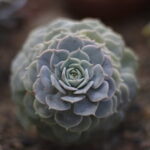 Can Frozen Succulents Bounce Back After Suffering Cold Damage?
Can Frozen Succulents Bounce Back After Suffering Cold Damage?Lack of ventilation is a common cause of brown and falling bottom leaves in succulents. By addressing this issue and providing adequate airflow, you can ensure the health and longevity of your succulent plants.
Frequently Asked Questions
1. Why are the bottom leaves of my succulent turning brown and falling off?
Brown and falling bottom leaves in succulents can be caused by overwatering, poor drainage, or fungal infections.
2. How can I prevent the bottom leaves of my succulent from turning brown and falling off?
To prevent brown and falling bottom leaves, make sure to water your succulent sparingly, provide proper drainage, and avoid overwatering. Additionally, ensure good air circulation and maintain a healthy environment.
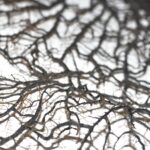 Reviving Dead Succulent Roots: A Step-by-Step Guide to Restore Health
Reviving Dead Succulent Roots: A Step-by-Step Guide to Restore Health3. Is it normal for succulents to lose their bottom leaves?
Yes, it is normal for succulents to shed their lower leaves as they grow. However, if the leaf loss is excessive or accompanied by other symptoms, it may indicate an underlying issue.
4. How can I treat brown and falling bottom leaves in my succulent?
If the issue is caused by overwatering, adjust your watering schedule. If poor drainage is the problem, repot your succulent in a well-draining soil mix. For fungal infections, remove the affected leaves and treat the plant with a suitable fungicide.
 Perennial Succulents: Low-Maintenance Plants for Easy Care
Perennial Succulents: Low-Maintenance Plants for Easy CareIf you want to read more articles similar to Causes of Brown and Falling Bottom Leaves in Succulents, you can visit the Care and Maintenance category.

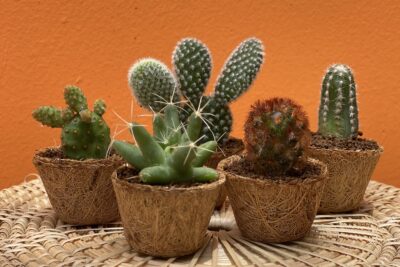
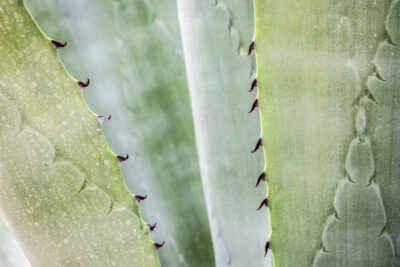
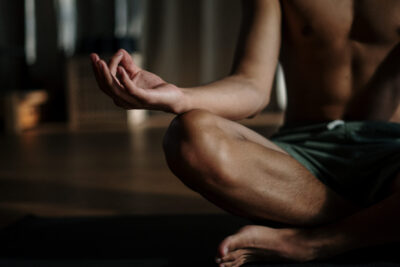


You Must Read